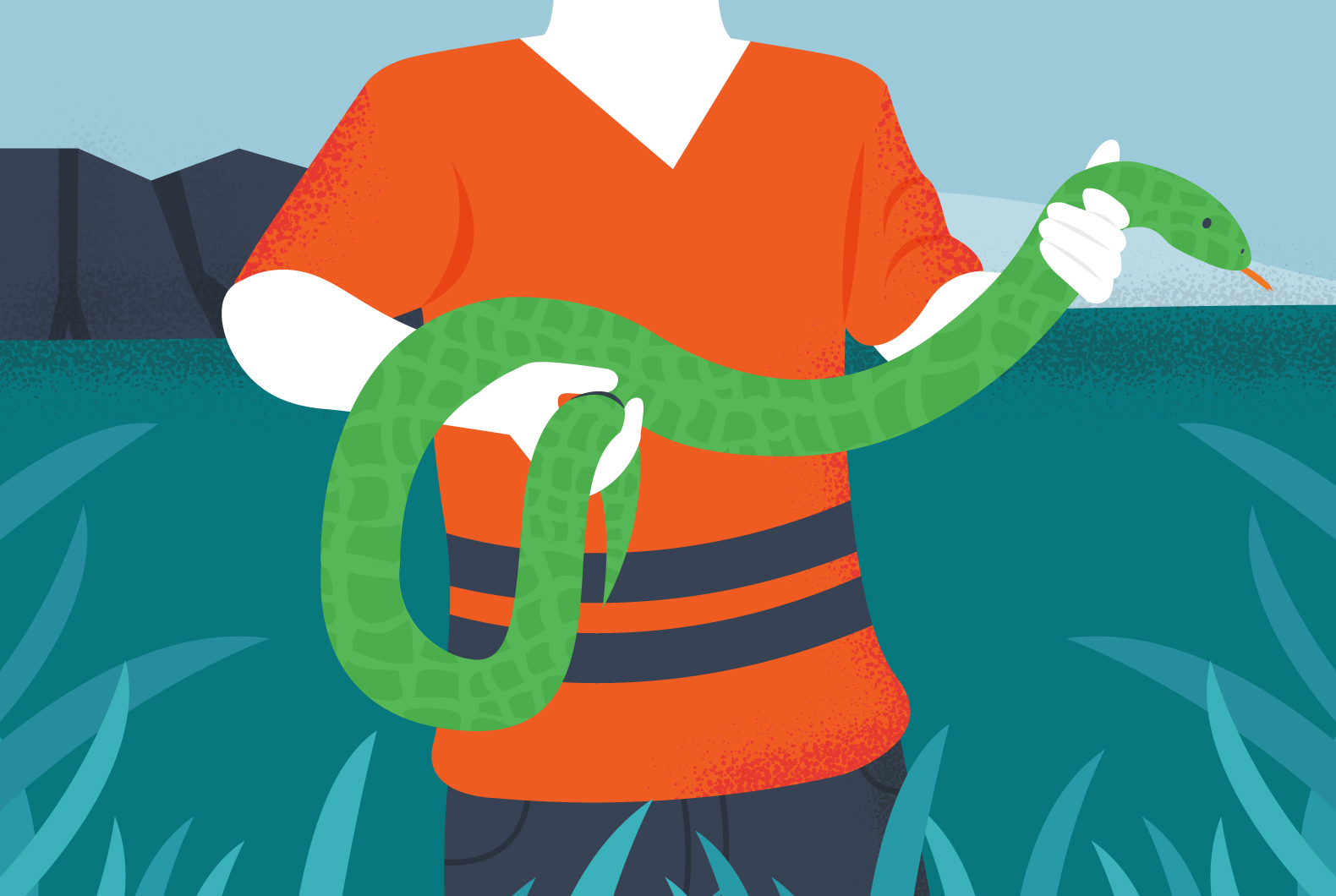

This article was written by Connor, one of our founding editors. Connor is a full-time travel and lifestyle photographer with extensive experience in the outdoors industry.
Whether you’re a first-time snake owner or simply want the knowledge in case you’re ever required to handle a snake (possibly for removal reasons), it is important that you learn the skill properly. Not only should you learn how to handle one safely for your own protection, but it will also be much fairer on the snake.
Snakes can be as beautiful as they are intimidating and we firmly believe that they deserve to be handled with care and respect. Moreover, depending on the type of snake you’re handling, there’s the potential that you could come away with a deadly bite if it’s not dealt with in the correct way.
Your first move should be giving your hands a good scrub before going near the snake. The main reason for this is so that you don’t pass on any potentially dangerous bacteria or infections to your snake.
Furthermore, snakes rely heavily on their sense of smell in order to identify food. If you’ve recently touched any food products, like meat, this could send your snake quickly into hunting mode.
Likewise, you should also get used to washing your hands after handling because snakes can carry bacteria like salmonella.
It’s completely normal to be afraid of picking up a snake. It’s actually a good idea to err on the side of caution, rather than heading in with too much confidence. If you become (or try to be) over-confident, it can be super easy to act carelessly when picking them up.
Caution and care are two crucial behaviors you should have when dealing with your snake. This means that you should opt for high-quality gear like snake-proof gloves, a snake hook, and tools to extend the reach of your arm.
When it comes to picking it up, you should do so with slow and controlled movements so that you don’t startle the snake. If you rush into it and make sudden movements then your snake may view this as threatening behavior and this is when you can run into danger.
If you notice that the snake begins to coil into a defensive ‘s’ shape, that’s a sure signal you need to stop what you’re doing. Take some time for it to relax again and start from scratch, making more effort this time to move steadily.
Depending on the size and temperament of the snake, a hook or tongs can come in incredibly handy to help control its movement. You’ll get more control from a shorter hook/tongs, but you will be closer to the snake.
Tongs are excellent for pulling a snake out from under an object such as a bush or bricks. They’ll work well with the size of all native US snakes, however, if you have a larger and more heavy-bodied snake at hand, then this is where hooks can be useful. Both tools can actually work well together so that you can support the snake’s body with more control.
Like we’ve already mentioned, your snake will react far better if you handle it gently. They are very receptive and will be more likely to become agitated if you’re too rough and careless.
Support the middle of its body well by using both hands, attempting to avoid holding it at the head. Hint: that’s where the bite comes from! If you hold it at the tail only, you’ll have far less control if it decides to suddenly whip around and strike.
Ideally, you should aim to place one hand roughly a third of the way down the body and your other hand slightly further down, towards the tail.
One of the biggest keys to handling your snake well is to constantly remain aware of the way it is reacting to your presence and touch. If it begins to coil, you know to back off and give it space to relax.
Different snakes will have very different temperaments and you will begin to learn how to read them more easily over time. It is well worth your time doing some reading on the type of snake you have and what its usual characteristics are. This will give you an idea of what to expect if you haven’t handled this specific snake before.